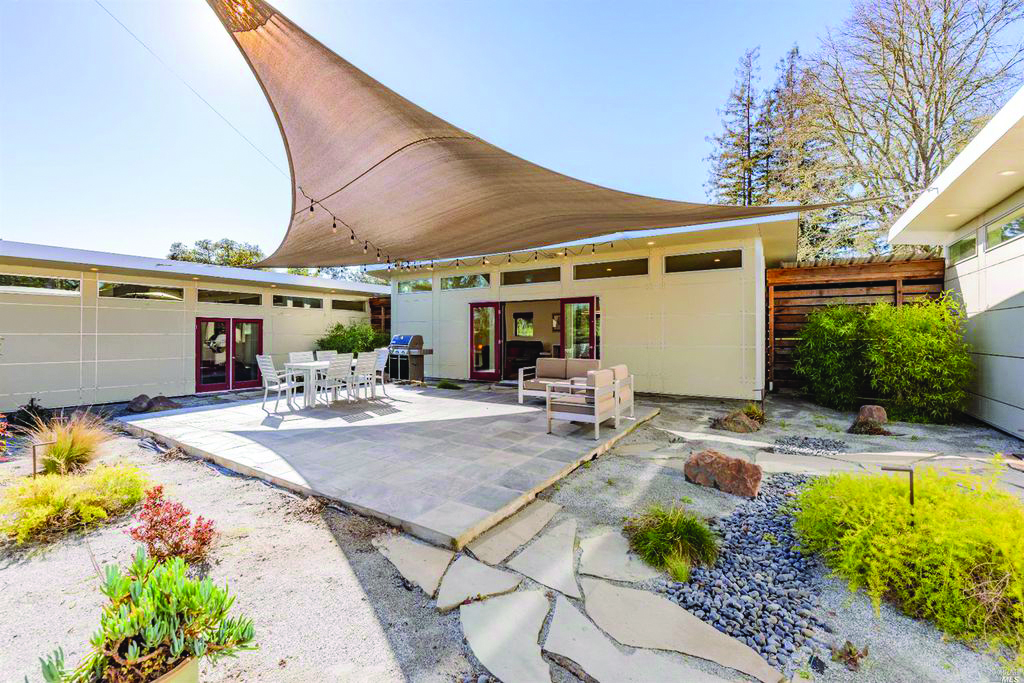Why is off-site construction suited to this market? What are the challenges and opportunities?
by Zena Ryder
- While offsite solves some of the problems posed by site-built ADUs, others remain
- The best way to make a profit in this niche is with a high-volume productized approach
- Permitting and financing are still a challenge, but the industry is working with banks and government agencies to find solutions

An Accessory Dwelling Unit, or ADU, is a small, second home placed on a residential lot where a primary home already exists. Other names it goes by include carriage home, granny flat, in-law suite and backyard cottage. An ADU can provide rental income or can serve as a living or working space for family members.
We interviewed several people in the off-site ADU business (see sidebar) to discuss why off-site, or factory-built, units are suited to this market and to talk about the challenges and opportunities. Here’s what we learned.
Offsite is a Perfect Fit
The typical property for an ADU is an established urban or suburban neighborhood with a mature, landscaped yard and nearby neighbors. Conventional construction can be disruptive here, with workers and trucks coming and going for long periods of time.
“Conventional construction also tends to generate a lot of mess on the site like scrap wood, pieces of foam, dropped nails and packaging waste,” says Daniel Engelman of Honomobo in Edmonton, Alberta. Off-site construction minimizes disruption on-site.
Offsite also has the advantage of speed. “While the foundation is being poured and cured, we’re building the unit in the factory,” Engelman says. “Craning the ADU in place might take half a day. Doing the on-site connections takes less than two weeks. It’s much faster, which is good for the homeowner and the neighbors.”
Jefre Outlaw of Hausfli in Austin, Texas points out that conventional construction is notorious for delays. “Even a small home requires 450 different products that have to arrive at the right times. Skilled trades also have to be available and have to show up on schedule.”
Furthermore, working outside in the elements makes the building vulnerable to moisture damage and subsequent mold risk. Building in a factory eliminates that risk.
Offsite’s higher quality comes at a cost, according to Outlaw, at least for small structures like ADUs. “Yes, offsite is faster, but the difference in interest saved on an interim construction loan isn’t enough to make up for the difference in cost to homeowners,” he says.
Of course, off-site ADU manufacturers strive to keep these costs to a minimum. The question is how.
Think Volume

Everyone we spoke with emphasized the importance of high-volume production as a way to make ADUs more affordable. For an established community, this means selling a large number of units to existing homeowners. For a new community, the builder or developer can include ADUs as a standard item or as an option. In both cases, the units would be manufactured by a third-party manufacturer.
Jeremy Nova of Studio Shed in Louisville, Colorado says that while direct-to-homeowners is a difficult way to scale ADU production, his company has found a way to do it. “We’re on track to build between 200 and 300 ADUs this year,” he says. They started with simple buildings like art or hobby studios. “We’ve been in business for 14 years. During that time we developed a network of shipping and installation partners, and organically grew into ADUs.”
Eventually, customers began requesting buildings with more complexity, including plumbing. “That made ADUs the logical next step for us, so we added plumbers and other trades to our networks. We were able to make ADUs work for us because we built on our experience with simpler buildings.”
A big piece of Studio Shed’s cost control is that their units are panelized rather than modular. This lets them ship in flat packs, which reduces shipping costs compared to volumetric modules. A crane isn’t needed on-site, which further reduces expenses to the homeowner.
Wanona Satcher at Mākhers Studio in Atlanta, Ga. which builds ADUs from shipping containers, agrees that selling volume makes a big difference. “The more we build, the more affordable it gets for us, for clients, and ultimately, for tenants,” Satcher says.

Satcher’s company has its first multi-unit project coming up. A North Carolina land trust bought five single-family homes and renovated them as duplexes for veterans. “We’re building five ADUs to go behind those existing structures,” she says. “Building more than one at a time makes things more cost-effective and affordable.”
Seek to Standardize
Of course, it costs less to manufacture any product if it’s standardized. The manufacturers we spoke with all have a small number of standard models, but they also allow for limited customization in features that don’t have a big impact on manufacturing, inspections and approvals. “Customization is for things like flooring and cabinet colors, not the structural system or the floor plan,” Engelman says.
Nova says that Studio Shed has various ‘mix and match’ layouts homeowners can choose from, with options for exterior and interior finishes. Examples include siding and kitchen cabinet colors.
The panelized approach also allows the company to provide more flexibility to homeowners regarding interior layouts, as well as door and window placement. However, the limited range of panel types the company uses means that the customer can’t change things like roof pitch and wall height.
But it’s not just the plans that need to be standardized. “You need repeatable manufacturing processes,” says Satcher. Repeatable processes increase speed and lower costs.
What About Permits?
Zoning and permitting can be a problem for all ADUs, but there are issues specific to those built off-site.
For example, although the city of Atlanta expanded zoning for ADUs, the permitting staff weren’t used to modular construction, let alone the shipping container construction that Māhkers uses. “The permitting process for a project that should have taken a week or two took 16 to 18 months,” Satcher says. “That made the timeline similar to conventional construction.”
Furthermore, because the city classified converted shipping containers as ‘special construction,’ they wanted a recent Mākhers’ ADU project to be submitted as a commercial, rather than a residential, structure, which would have greatly increased permit fees. Higher fees make it harder to provide ADUs that homeowners can afford and rent out at an affordable rate to tenants. Through discussions with the city, Satcher educated officials on modular construction for residential structures, which she hopes will speed things up in the future.
Satcher’s company is applying to Georgia’s state-wide Industrialized Building Program in hopes that the company’s standardized building plans will be approved state-wide. “Then we would be able to build anywhere in the state, with just permitting specific to the site. That would speed things up a lot.”
The NIMBY Challenge

Some neighbors will object to any ADU because they’re worried about densification, parking, or the bringing of low-income tenants into their neighborhood. But there are NIMBY factors specific to modular ADUs.
“Too many homeowners don’t know the difference between a high-quality, permanent modular home and a trailer home,” Outlaw says. Although he acknowledges that mobile homes have improved in recent decades, the quality still doesn’t compare to a modular home set on a permanent foundation. “If those people were educated, and if ADUs were restricted to modular buildings rather than mobile homes, then that problem could be overcome.”
Engelman sees progress on this issue, especially in California. “Five years ago, people thought ADUs were trailers, which created a stigma. But California is the most progressive place for ADUs, and every city now has them. People have gotten used to them so the stigma has gone away.”
Getting a Loan
ADUs can be difficult for homeowners to finance. “Some clients can self-finance,” Satcher says. “But we want to provide affordable housing in communities where homeowners can’t afford to self-finance.”
Some housing organizations have found ways to help homeowners finance ADU construction (whether offsite or conventional). For example, Housing Assistance on Cape Cod, Mass. worked with three local banks to create loans that count projected rental income from the ADU in homeowners’ ability-to-pay calculations.
There can be additional problems in financing for off-site built ADUs. “Banks are used to construction loans with conventional draw schedules,” says Outlaw. “The first draw might be 20% to clear the site, install the sub-rough plumbing and pour the foundation. The next 20% might be for framing, roof, doors and windows.
By contrast, an off-site factory won’t start building without 70% to 80% of the money upfront and some banks are hesitant to loan this much. With conventional construction, if the builder fails halfway through a project, another builder can take over. But with offsite, another factory can’t easily take over if the manufacturer goes under.
Experts are working on solutions that include installing cameras in the factory and putting UCC-1 filings—a type of lien— on the units being manufactured. “This gives the bank some security that an asset is being created and that if something goes wrong, they can recover those assets,” says Outlaw.
Despite these challenges, the interviewees were optimistic about the ADU market’s potential for off-site builders. Demand is strong and growing, and jurisdictions across North America are gradually liberalizing zoning to allow for more ADUs. “I’m excited that Atlanta is progressive in its land-use policy,” Satcher says. “We’re working on getting the building inspections department more comfortable with off-site construction. And, the more we build, the easier it’s going to get.”
Zena Ryder is a freelance writer who writes about construction for businesses, magazines, and websites. Find her at zenafreelancewriter.com.
Experts Interviewed For This Article:
Daniel Engelman is co-founder and CEO of Honomobo in Edmonton, Alberta. Using shipping containers, they manufacture ADUs, as well as single-family homes and commercial structures for US and Canadian markets.
Jeremy Nova is the co-founder and Creative Director of Studio Shed in Louisville, Colorado. They manufacture panelized ADUs as well as offices and art studios, which are shipped in flat-packed kits across the US.
Jefre Outlaw is the founder and CEO of Hausfli in Austin, Texas. They design and install modular ADUs to serve as offices and art studios, primarily in Texas.
Wanona Satcher is the founder and CEO of Mākhers Studio in Atlanta, Georgia. The company converts shipping containers into ADUs to provide affordable rental housing.






